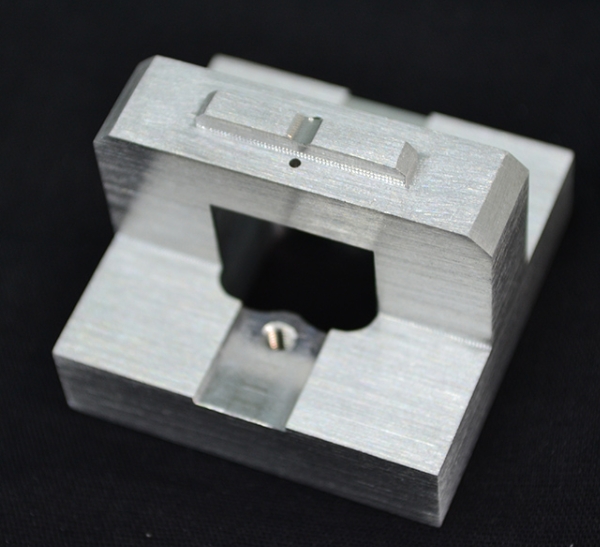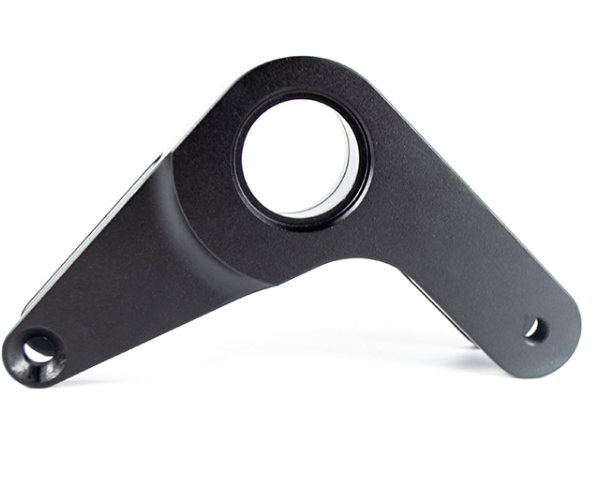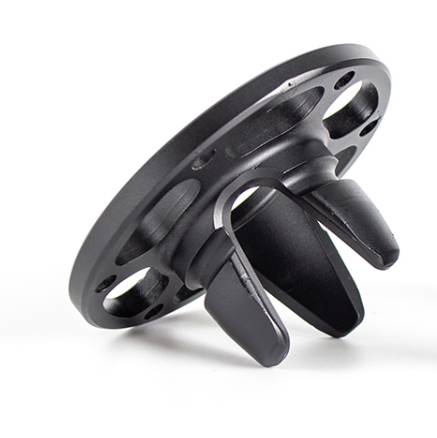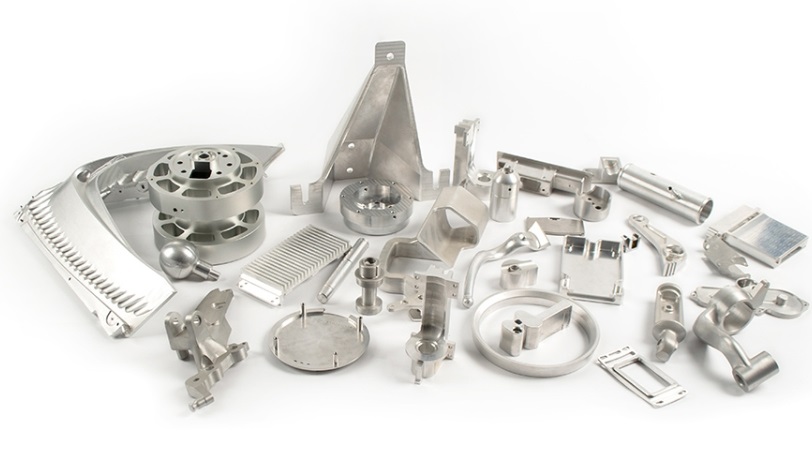3D printing technology has revolutionized the world of do-it-yourself projects, empowering hobbyists and makers to create complex, functional objects that were once only possible with industrial manufacturing. The open-source community has embraced this technology, developing an impressive library of project designs that combine engineering, creativity, and hands-on learning. Whether you’re a beginner looking to expand your skills or an experienced maker seeking your next challenge, these 10 DIY open-source projects offer something for every skill level. Each project provides unique learning opportunities while producing practical or entertaining results you can be proud of.
Why 3D Printing Open Source Projects Matter
The intersection of 3D printing and open-source principles has created a vibrant ecosystem of innovation and knowledge sharing. Open-source 3D printing projects offer numerous advantages that make them ideal for DIY enthusiasts:
- Accessibility: Free or low-cost designs eliminate expensive licensing fees, putting advanced projects within reach of anyone with a 3D printer.
- Customization: Open-source files can be modified to suit personal preferences or specific needs, encouraging creative problem-solving.
- Community Support: Active online communities provide troubleshooting help, modification ideas, and moral support throughout your building process.
- Skill Development: These projects teach valuable skills in 3D modeling, mechanical assembly, electronics integration, and problem-solving.
- التكرار السريع: The open-source model allows designs to evolve quickly as community members identify improvements and share modifications.
This collaborative approach has resulted in projects that are continuously refined, with detailed documentation and community-tested solutions to common challenges. For makers, this means higher success rates and more rewarding building experiences.
Project Difficulty and Skill Level Guide
Not all 3D printing projects are created equal in terms of complexity. The following projects range from moderate to advanced difficulty, allowing you to choose based on your experience level:
| مشروع | Skill Level | Estimated Print Time | Required Materials Beyond Filament |
| Self-absorbing planters | مبتدئ | 4-6 ساعات | Glass jar, soil, plant |
| Dragonfly Technology | Beginner-Intermediate | 3–5 hours | Rubber band, small hardware |
| Plotter | متوسط | 15–20 hours | Servo motors, pen, Arduino |
| PiKon Telescope | متوسط | 10–15 hours | PVC pipe, Raspberry Pi, lens |
| DIY Camera Slides | متوسط | 12–18 hours | PVC pipe, DC motor, controller |
| Hovercraft | Intermediate-Advanced | 20–25 hours | Styrofoam, motor, battery, remote control |
| Strandbeest – Beach Beast | Intermediate-Advanced | 25–30 hours | Metal rods, string, hardware |
| OpenRC Formula 1 toy car | متقدم | 30–40 hours | Motor, ESC, remote control system |
| DIY Quadcopter | متقدم | 25–35 hours | Flight controller, motors, battery, FPV components |
| Robotic Arm | متقدم | 40–50 hours | Stepper motors, Arduino, servos, power supply |
This guide helps you select a project that matches your current skills while providing enough challenge to help you grow as a maker. Beginners should start with simpler projects to build confidence and basic skills before tackling more complex builds.
1. OpenRC Formula 1 Toy Car
The OpenRC Formula 1 project brings the excitement of motorsports to the world of 3D printing, offering a fully functional remote-controlled race car that you can build and customize. This community-driven project has attracted makers worldwide who share modifications, performance tips, and racing stories.
Project Overview
This open-source RC car features a realistic Formula 1-inspired design that can be scaled to various sizes, with the maximum length exceeding 150 cm for larger builds. The modular design allows for easy customization, with different body styles, wheel options, and performance components available through community modifications.
Building the OpenRC F1 teaches valuable lessons in:
- Mechanical assembly and gear alignment
- Suspension tuning and vehicle dynamics
- Electronics integration (motor, ESC, receiver)
- Aerodynamic principles through optional body modifications
Construction Details
The car consists of several major assemblies that print separately and combine for final assembly:
- Chassis and suspension components
- Steering mechanism
- Drivetrain with motor mount
- Body shell (available in multiple designs)
- Wheels and tires (printable or upgradable to rubber)
Recommended Materials and Processes
- Primary Material: ABS is recommended for its strength and impact resistance, crucial for a racing vehicle.
- Alternative: PETG offers good durability with easier printing characteristics for less experienced users.
- Printing Technology: FDM (نمذجة ترسب تنصهر) works well for this project, with MJF (Multi Jet Fusion) providing better strength for critical components if available.
- ارتفاع الطبقة: 0.2mm for most components, with 0.15mm for detailed parts like the body shell.
2. Dragonfly Technology
For those fascinated by flight mechanics, the 3D printed dragonfly project offers a captivating exploration of biomimetic design—creating machines inspired by biological structures. This compact, rubber-powered flying device mimics the extraordinary flight characteristics of real dragonflies.
Project Overview
This project focuses on understanding flapping-wing flight through a hands-on build. The dragonfly’s wings are powered by a wound rubber band, storing potential energy that converts to kinetic energy as it unwinds, creating liftoff. The design demonstrates principles of aerodynamics, energy transfer, and lightweight structure optimization.
The completed dragonfly measures approximately 15–20 cm in wingspan, making it large enough to demonstrate clear flight characteristics while remaining manageable to print and assemble.
Construction Details
The dragonfly consists of relatively few components, making it accessible but still educational:
- Central body with rubber band storage mechanism
- Four wings with biomimetic airfoil shapes
- Wing hinges that allow natural flapping motion
- Tail stabilizer for flight control
Assembly is straightforward but requires careful attention to wing alignment, as proper balance is essential for successful flight.
Recommended Materials and Processes
- Primary Material: Lightweight PLA works well for most components, offering good stiffness-to-weight ratio.
- Alternative: Flexible PP (البولي بروبيلين) can improve wing durability and flex characteristics.
- Printing Technology: FDM is ideal for this project due to its speed and material efficiency.
- Special Considerations: Wings should be printed with minimal infill (10–20%) to reduce weight while maintaining structural integrity.
3. DIY Hovercraft
This ambitious project began as an educational tool for students, designed to create an inexpensive mobile research station for Arctic environments. The result is a versatile 3D printed hovercraft that can glide over smooth surfaces on a cushion of air.
Project Overview
Hovercraft technology offers a fascinating introduction to fluid dynamics and propulsion systems. This project teaches principles of:
- Air pressure and lift generation
- Thrust vectoring and steering
- Weight distribution and balance
- Power management for electric systems
The completed hovercraft can carry small payloads and operates on various surfaces including floors, tables, and even water, making it a versatile platform for further experimentation.
Construction Details
The hovercraft design combines 3D printed components with readily available materials:
- 3D printed hull structure and motor mounts
- Styrofoam base for buoyancy and low friction
- Electric fan for lift (creating the air cushion)
- Propulsion motor with directional control
- Remote control receiver and battery
The assembly process involves integrating the electronic components with the printed structure, balancing the weight distribution, and calibrating the air flow for optimal performance.
Recommended Materials and Processes
- Primary Material: ABS for structural components due to its impact resistance and rigidity.
- Printing Technology: FDM works well for all components, with MJF offering enhanced durability for critical parts.
- ارتفاع الطبقة: 0.2–0.3mm for most parts, with 0.15mm for components requiring precise fits.
- Special Requirements: Lightweight construction is essential—use 20–30% infill for non-structural parts.
4. DIY Quadcopter
For makers interested in aerial robotics, this 3D printed FPV (First Person View) quadcopter project offers an affordable entry into the world of drone technology. Despite the complexity of flying machines, this open-source design breaks down the process into manageable steps.
Project Overview
This lightweight quadcopter features a drop-resistant design that protects sensitive electronic components during inevitable crashes—making it ideal for learners. The project provides hands-on experience with:
- Aerial vehicle dynamics and stability
- Electronic speed controller (ESC) programming
- FPV camera setup and video transmission
- Remote control systems integration
- Battery management and power systems
With 24 different design options available on Thingiverse, you can choose configurations that match your budget and skill level, from basic frameworks to advanced models with enhanced features.
Construction Details
The quadcopter’s modular design consists of several key assemblies:
- 3D printed frame with protective cage
- Motor mounts designed for optimal weight distribution
- Battery holder with secure retention
- Camera mount for FPV system
- Electronics bay for flight controller and receivers
Assembly requires careful attention to motor alignment and weight balancing, as even small discrepancies can affect flight performance.
Recommended Materials and Processes
- Primary Material: ABS for the lower frame components provides excellent impact resistance, while PLA can be used for upper parts to reduce weight.
- Printing Technology: FDM is recommended for its balance of strength and material efficiency, with MJF suitable for those seeking maximum durability.
- Special Considerations: Critical structural components should be printed with 50–70% infill, while non-load-bearing parts can use 20–30% infill.
- Layer Orientation: Print frame components with layers aligned to withstand impact forces, typically with the strongest axis vertical.
5. Strandbeest – Beach Beast
Combining art and engineering, the Strandbeest (Dutch for “beach beast”) is a wind-powered walking sculpture that roams across sandy surfaces with an eerily lifelike gait. Originally created by artist Theo Jansen, this 3D printed version brings this amazing kinetic sculpture to makers worldwide.
Project Overview
This project challenges you to build a mechanical creature that converts wind energy into walking motion through an ingenious system of levers and linkages. Building a Strandbeest teaches:
- Kinematic chain design and motion transfer
- Mechanical advantage and leverage principles
- Wind energy utilization
- Balance and gait optimization
The completed Strandbeest moves gracefully across flat surfaces, powered only by wind, making it a fascinating demonstration of mechanical engineering principles.
Construction Details
The Strandbeest consists of repeating modular components that combine to form its walking mechanism:
- Eight identical leg assemblies with precise linkage points
- Central body frame connecting all leg systems
- Wind-catching sail or propeller
- Stabilizing tail for balance
The genius of the design lies in its simplicity—each leg follows an elliptical path that provides forward motion without lifting the body excessively, reducing energy requirements. Assembly requires careful attention to ensure all linkages move freely without binding.
Recommended Materials and Processes
- Primary Material: Nylon is ideal for its combination of flexibility and strength, allowing the moving parts to operate smoothly without excessive wear.
- Alternative Materials: PETG offers good durability at a lower cost for beginners.
- Printing Technology: MJF (Multi Jet Fusion) or SLS (انتقائي ليزر التلبد) produce the strongest nylon parts, though FDM can work with appropriate settings.
- Special Requirements: Moving parts should have slight clearance (0.2–0.3mm) to ensure smooth operation without binding.
6. 5-Axis Robotic Arm
For makers interested in automation and robotics, this 5-axis robotic arm project offers an advanced challenge that combines 3D printing with electronics and programming. Developed by professional engineers, this open-source design brings industrial-style robotics to the home workshop.
Project Overview
This fully functional robotic arm can be controlled to perform precise movements, making it useful for tasks like pick-and-place operations, drawing, or light assembly work. Building this project develops skills in:
- Servo motor control and calibration
- Arduino programming for motion control
- Mechanical linkage design and assembly
- End effector customization
- Coordinate system mapping for precise movements
The arm’s modular design allows for future upgrades or modifications as your skills and needs evolve.
Construction Details
The robotic arm consists of several articulated segments working together:
- Base rotation mechanism with large servo
- Shoulder, elbow, and wrist joints with precise bearings
- Gripper or end effector mounting system
- Internal cable management for clean appearance
- Control interface components
Assembly requires careful attention to alignment and movement calibration, as each joint’s performance affects the overall precision of the arm.
Recommended Materials and Processes
- المواد الأولية: PLA for structural components provides good rigidity at low cost, with PC (البولي) recommended for high-stress joints.
- Printing Technology: FDM is the optimal choice for this project, offering the best balance of cost, قوة, and accessibility.
- Special Considerations: Bearings and moving parts should be printed with 100% infill for maximum precision, while non-critical components can use 50% إنفيل.
- Layer Orientation: Print joint components with layers aligned to withstand rotational forces for maximum durability.
7. Self-Absorbing Planters
Not all 3D printing projects need to be technically complex to be rewarding. These self-absorbing planters offer a practical solution for plant care while demonstrating principles of capillary action and water management.
Project Overview
Ideal for travelers or anyone who struggles to keep plants watered consistently, these self-watering planters use simple physics to maintain optimal soil moisture. The project teaches:
- Water transfer through capillary action
- Material selection for water resistance
- Functional design for practical use
- Plant-specific moisture requirements
The clear glass jar reservoir allows easy monitoring of water levels, while the 3D printed planter component regulates water flow to the soil.
Construction Details
The design consists of a surprisingly simple but effective system:
- 3D printed planter base with integrated wicking mechanism
- Water reservoir interface that fits standard glass jars
- Soil retention structure with drainage for appropriate plants
- Optional decorative elements that don’t interfere with functionality
The key to the design is the water transfer system that delivers moisture to plant roots without overwatering, using materials that naturally draw water through capillary action.
Recommended Materials and Processes
- Primary Material: PETG is ideal for this project due to its excellent water resistance and food-safe properties.
- Alternative: PLA can work but may degrade over time with constant moisture exposure.
- Printing Technology: FDM is perfect for this application, with no special requirements beyond standard settings.
- Special Considerations: Ensure all water-contacting surfaces are printed with sufficient layer adhesion to prevent leaks—use 100% infill for the water transfer components.
8. DIY Plotter
For creative makers interested in digital art and precision drawing, this 3D printed plotter project converts digital designs into physical artwork using a standard pen or marker. This accessible robotics project brings digital fabrication to traditional art forms.
Project Overview
This drawing machine can create intricate designs, greeting cards, formal invitations, or wall art from raster files, offering a unique blend of technology and creativity. Building the plotter teaches:
- Stepper motor control and calibration
- Belt drive systems and mechanical precision
- Computer-aided design for plotting
- Coordinate system mapping
- Software integration for design execution
The plotter’s versatility allows it to work with various pens and markers, creating different line styles and effects depending on your creative vision.
Construction Details
The plotter’s design combines mechanical precision with electronic control:
- 3D printed frame providing stable platform
- X and Y axis movement systems with belt drives
- Pen holder with height adjustment
- Stepper motor mounts with precise alignment
- Electronics housing for controller board
Assembly requires careful attention to ensuring smooth movement along both axes, as any binding or misalignment will affect drawing quality.




